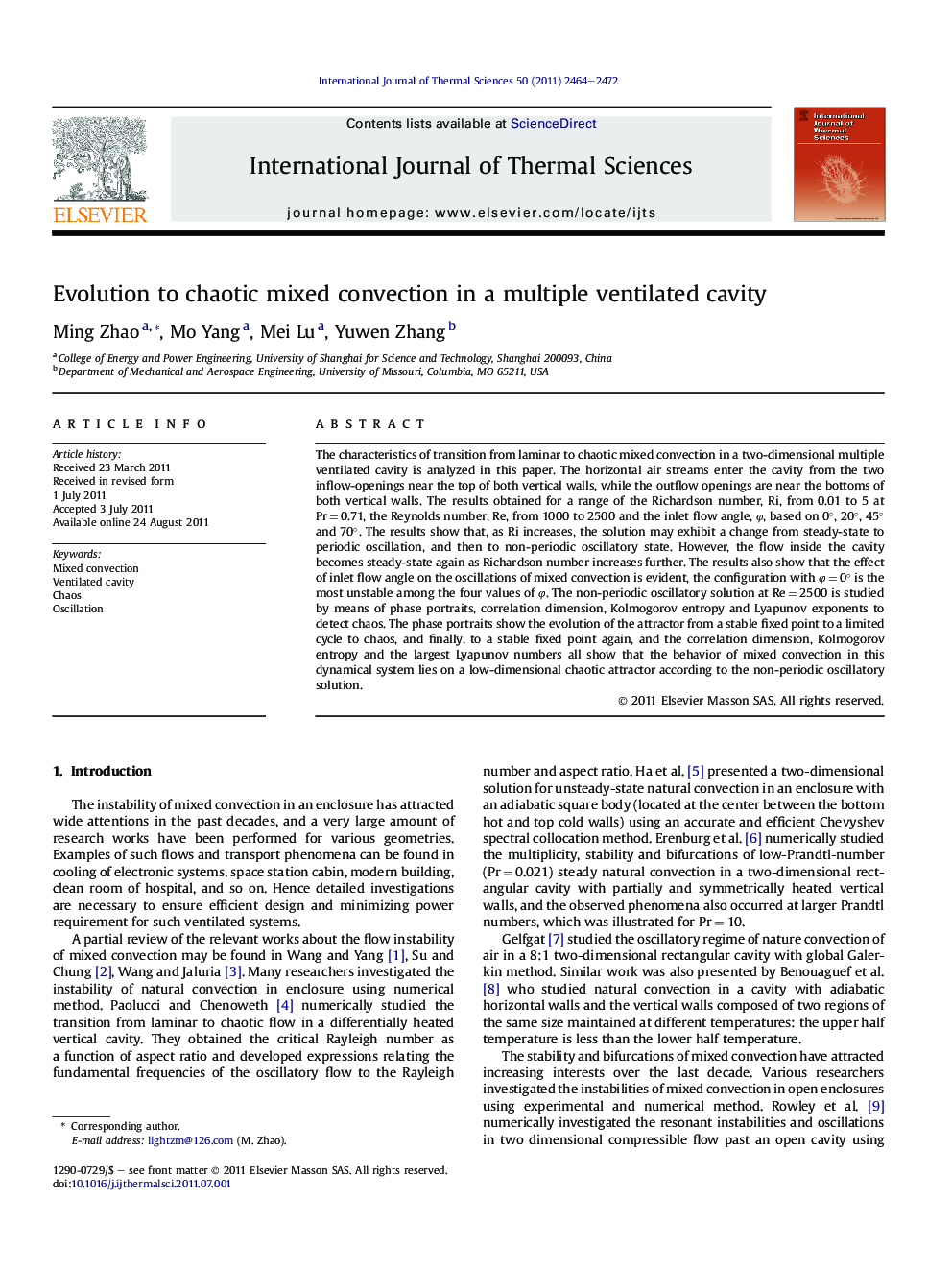| Article ID | Journal | Published Year | Pages | File Type |
|---|---|---|---|---|
| 669041 | International Journal of Thermal Sciences | 2011 | 9 Pages |
The characteristics of transition from laminar to chaotic mixed convection in a two-dimensional multiple ventilated cavity is analyzed in this paper. The horizontal air streams enter the cavity from the two inflow-openings near the top of both vertical walls, while the outflow openings are near the bottoms of both vertical walls. The results obtained for a range of the Richardson number, Ri, from 0.01 to 5 at Pr = 0.71, the Reynolds number, Re, from 1000 to 2500 and the inlet flow angle, φ, based on 0°, 20°, 45° and 70°. The results show that, as Ri increases, the solution may exhibit a change from steady-state to periodic oscillation, and then to non-periodic oscillatory state. However, the flow inside the cavity becomes steady-state again as Richardson number increases further. The results also show that the effect of inlet flow angle on the oscillations of mixed convection is evident, the configuration with φ = 0° is the most unstable among the four values of φ. The non-periodic oscillatory solution at Re = 2500 is studied by means of phase portraits, correlation dimension, Kolmogorov entropy and Lyapunov exponents to detect chaos. The phase portraits show the evolution of the attractor from a stable fixed point to a limited cycle to chaos, and finally, to a stable fixed point again, and the correlation dimension, Kolmogorov entropy and the largest Lyapunov numbers all show that the behavior of mixed convection in this dynamical system lies on a low-dimensional chaotic attractor according to the non-periodic oscillatory solution.
► Chaos theory is introduced to analyze the characteristics of mixed convection in a multiple ventilated cavity. ► The behavior of mixed convection in this dynamical system lies on a low-dimensional chaotic attractor. ► The effect of inlet flow angle on the oscillations of mixed convection is evident and the configuration with φ = 0° is the most unstable.
